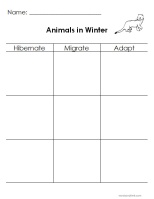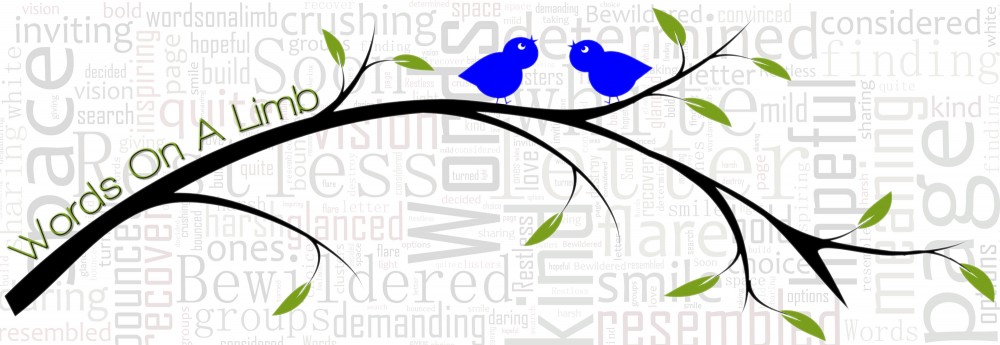 One look out the window on most winter days and your first instinct is to crawl right back into bed and curl up like a ball. But as cozy as that sounds, its not always an option.
One look out the window on most winter days and your first instinct is to crawl right back into bed and curl up like a ball. But as cozy as that sounds, its not always an option.
We are left to embrace the chilly winter days by adapting to them; poofy jackets, warm boots, wooly hats, furry mittens, snow pants, scarves, ear-muffs – you name it, before you know it, you’re barely recognizable.
But what do animals do during the long and cold winter months? How do they survive? And where are they?
 Peek-a-Boo, Why Don’t I See You – Animals in Winter, is a poem I wrote to help children understand how various animals cope during the winter. It introduces the concepts of hibernation, migration and adaptation.
Peek-a-Boo, Why Don’t I See You – Animals in Winter, is a poem I wrote to help children understand how various animals cope during the winter. It introduces the concepts of hibernation, migration and adaptation.
 A fun and memorable way to acquaint students with the vocabulary is to form associations with them. (If you enjoy acting every now and then, this is a good time to show off those skills). I began by telling my students that I have a team of ‘scientists’ that will be working with us. I told them that my name was Bernate and asked them to wave and say hi to me, (hence hi-Bernate). Then I pretended to fall asleep (hibernating teacher). They seemed perplexed at first, but smiled when they understood what I was doing. Next, I introduced my pretend assistant named Grate (an invisible bird sitting on my hand) and gestured that he is only mine, (hence my-Grate). Then I pretended to catch him as he attempted to fly away (migrating assistant). Finally, I added our last participant to the mix – a very furry fox named Apt, (add-apt). There I had it, the terminology (and basic meaning) that students would need for the unit was now easily accessible with simple gestures as cues. (I can’t help but smile when I see my students mimicking the gestures I associated with the terms).
A fun and memorable way to acquaint students with the vocabulary is to form associations with them. (If you enjoy acting every now and then, this is a good time to show off those skills). I began by telling my students that I have a team of ‘scientists’ that will be working with us. I told them that my name was Bernate and asked them to wave and say hi to me, (hence hi-Bernate). Then I pretended to fall asleep (hibernating teacher). They seemed perplexed at first, but smiled when they understood what I was doing. Next, I introduced my pretend assistant named Grate (an invisible bird sitting on my hand) and gestured that he is only mine, (hence my-Grate). Then I pretended to catch him as he attempted to fly away (migrating assistant). Finally, I added our last participant to the mix – a very furry fox named Apt, (add-apt). There I had it, the terminology (and basic meaning) that students would need for the unit was now easily accessible with simple gestures as cues. (I can’t help but smile when I see my students mimicking the gestures I associated with the terms).

![]()
Peek-a-Boo, Why Don’t I See You? Animals in Winter by Lora Rozler is licensed under a Creative Commons Attribution-NoDerivatives 4.0 International License.
Here are some fun related activities I created and plan to share with my students throughout our exploration of Animals in Winter. I hope you enjoy incorporating them into your classroom adventures as well.
While we’ve 
 enjoyed reading many fiction and non-fiction books about Winter Animals, we have equally enjoyed filling a class chart on animals that hibernate, migrate and adapt. Though our list continues to grow each day, I selected various animals to be used in a follow-up sorting activity (sample here).
enjoyed reading many fiction and non-fiction books about Winter Animals, we have equally enjoyed filling a class chart on animals that hibernate, migrate and adapt. Though our list continues to grow each day, I selected various animals to be used in a follow-up sorting activity (sample here).

 Winter Wonderland
Winter Wonderland
Students colour, cut, and paste various animals into the appropriate place in the winter wonderland scene.

 Sleepy Bear Students use
Sleepy Bear Students use
various craft items (i.e., tissue paper, cotton balls, construction paper, paper bags, twigs, popsicle sticks, and whatever else you can find around your room) to create a home for a sleepy bear. You may or may not want to tell students in advance how these items can be used. I personally enjoy watching what students come up with when they are given free choice, but I do give them a starting point.



 A little while ago, I was pleased to connect with Stella when I was in contact with Scholastic Canada. She was very gracious and supportive to me as a burgeoning writer. Her insight and advice gave me great direction and confidence.
A little while ago, I was pleased to connect with Stella when I was in contact with Scholastic Canada. She was very gracious and supportive to me as a burgeoning writer. Her insight and advice gave me great direction and confidence.  but once it was there I couldn’t stop thinking about it. I knew I had to write a joke to match that punchline. I finally figured it out, “Where does Big Foot live?” Before I knew it I had written over 150 spooky jokes and some silly poems too. I sent them to an editor at
but once it was there I couldn’t stop thinking about it. I knew I had to write a joke to match that punchline. I finally figured it out, “Where does Big Foot live?” Before I knew it I had written over 150 spooky jokes and some silly poems too. I sent them to an editor at